These Climate Change Victims Risk Everything to Catch Crabs for the Rich
December 19, 2022Kharo Chhan, PAKISTAN – The reflection of the rising sun looks like a shadow in the muddy water lacing through the mangrove. Carrying a makeshift life jacket, a hooked iron stick, and a plastic bag, barefoot 40-year-old Suleiman Mallah wades through a patch of the world’s largest mangrove forest in an arid zone. He’s in torn clothes in search of lucrative mud crabs. He is fearful and hopeful.
“We risk our lives, often dodging snake bites, to catch the crabs,” he told VICE World News.
Mud crabs, or mangrove crabs, are brown, fast and have strong and vicious claws. Catching them can be extremely dangerous, and the increase in snakes following Pakistan’s super floods, have made it harder.
Kharo Chhan is in Thatta, one of Pakistan’s poorest districts in Sindh province, and most of it was submerged in floods two months ago. Mangrove forests in the Indus Delta line the Indus River until it flows into the Arabian Sea. These forests have seen a recent explosion in small mud crabs. Highly resilient to water salinity and temperature variations, mud crabs have spawned rapidly in the floods and unprecedented heat waves this year in Pakistan.
“This region was very fertile but now everything is devastated here due to climate change. There is saline water everywhere,” a local climate activist, Ali Raza Wanjaro, told VICE World News.
For the area's fisherfolk, most of whom live below the poverty line, this has proven to be a double-edged sword. “Due to high tides of the River Indus, our homes were completely ravaged. There was no source of income, and now again we have started catching mud crabs,” said Mallah.
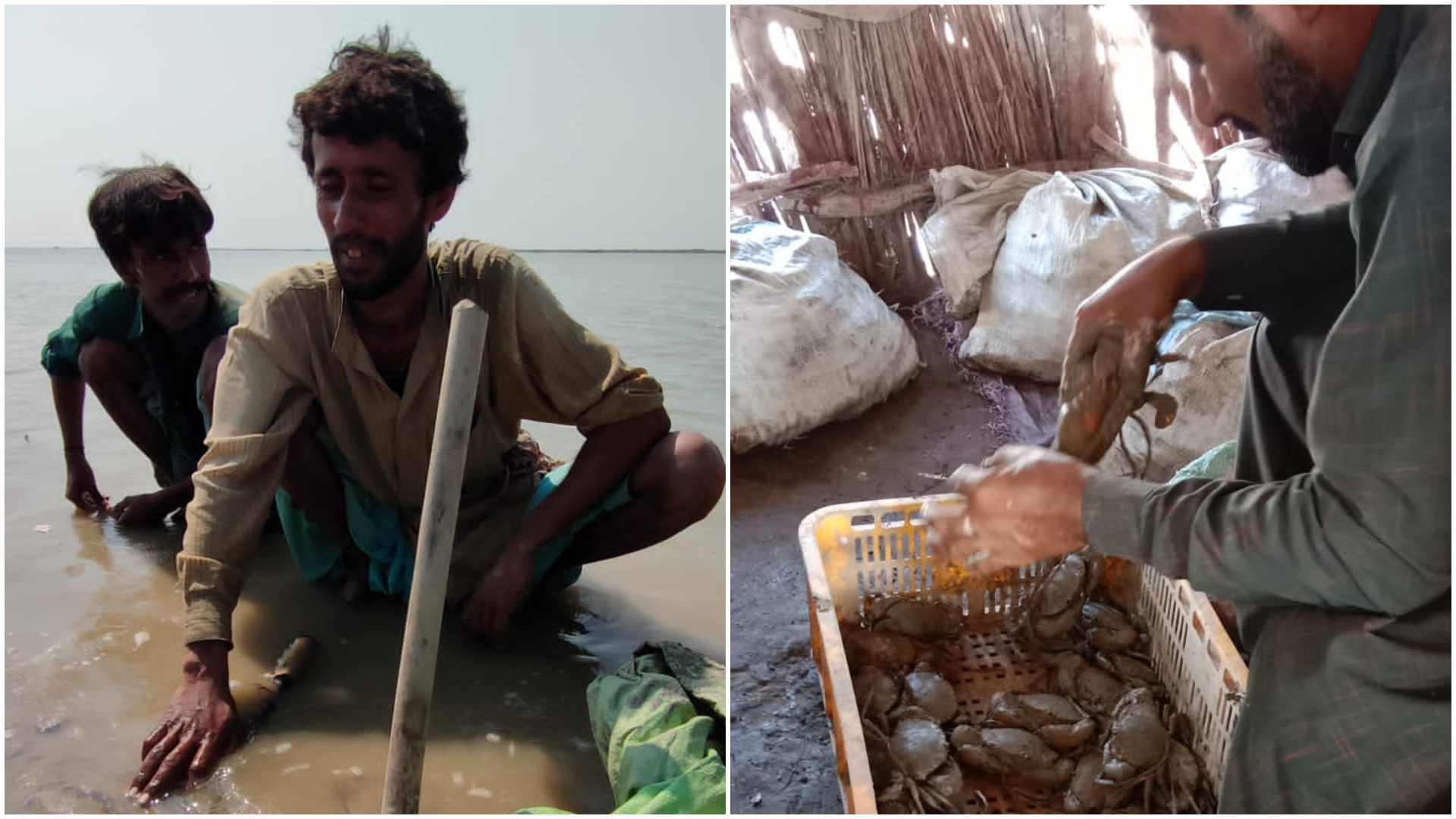
Climate disasters have forced many to catch mud crabs and hand them to an exploitative supply chain of agents, middlemen, suppliers, and exporting companies in Pakistan who leave them with little profit. “We are barefoot, heavily in debt and poor, but these agents and suppliers have become millionaires, they have large bungalows, luxurious cars, and land,” Mallah said.
Agents, middlemen or crab suppliers, and crab exporting companies don’t engage in the risky labour the desperate mud crab catchers do, nor do they offer any sort of safety equipment, medical insurance or support to them.
Climate disasters have forced many to catch mud crabs and hand them to an exploitative supply chain of agents, middlemen, suppliers, and exporting companies in Pakistan who leave them with little profit.
“There are no rules and regulations in markets here,” Wanjaro said. “The mud crabs are transported in special cars but fishermen live hand to mouth.”
If Mallah catches smaller crabs that weigh less than 200 grams, close to the edge of the mangrove, the agents give him nothing or 4 cents per crab. These same small crabs, agents sell for 50 cents to exporters, who sell them for $1-2 each or fatten them up and sell them for $10-12 each. If Mallah goes deeper into the mangrove on a boat and catches larger mud crabs that are between 500 grams to 800 grams, those can sell in live markets in China, Singapore and Hong Kong for $30 to $100 each. But he gets less than 90 cents for them.
To catch bigger crabs, Mallah rents a little motor-run boat from his agent. He pays the agent to use the boat, and the agent takes a cut on every crab they catch. A successful catching day might land Mallah a few large mud crabs, but he’ll be paid less than $2 a day, keeping him below Pakistan’s poverty line.
“We can't sell to others because we are not free, we are in debt,” Mallah said. The middlemen have created a fearful environment where the mud catchers can only sell exclusively to them. They refer to the mud catchers as “their” ghattos, or fisherfolk in Sindhi. An agent, who sells crabs 150 kilometres away in Pakistan’s largest city Karachi and didn’t want to share his name fearing legal repercussions, told VICE World News, “My ghattos cannot sell to anyone else.” Speaking anonymously to VICE World News, other agents said, “I have 50 ghattos” and “These are my ghattos.”
“Seven years ago, I took a $500 loan from an agent. I have returned him $2,500 in commissions, but he says I still have the same debt,” Soomar Mallah, another mud crab catcher, told VICE World. He isn’t allowed to sell to anyone but his agent.
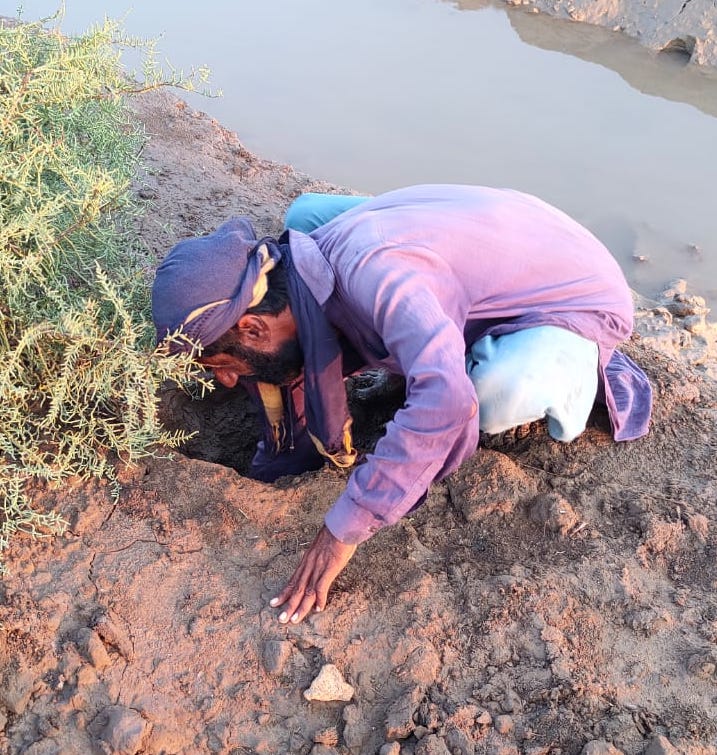
Soomar Mallah and eight other mud catchers leave on a boat every week for five days in search of crabs. Each one has a plastic bag, makeshift life jacket, and a hooked iron stick. A kilometre into the ride, they park their boat, and jump into the muddy water that reaches their shoulders in search of large lucrative crabs.
“We are lucky to catch large crabs, otherwise, we only get small crabs. Sometimes, we return having nothing in our hands,” Muhammad Saleh Jat, another mud catcher, told VICE World News.
“It is not easy to catch crabs, my young brother just passed away, because he was bitten by a snake while he was catching crabs.”
Every year, 8,000 snake bite incidents take place in Sindh. In the Indus Delta, anti-venom is hardly available, the nearest hospital to Kharo Chhan is two hours away. If the patient is serious, he is taken on a four-hour drive to Karachi.
“It is not easy to catch crabs, my young brother just passed away, because he was bitten by a snake while he was catching crabs.”
Abbas Chero is around 60 years old now, but years ago he was bitten by a snake in a mangrove swamp. It took his family a while to find a life-saving anti-venom shot, but they succeeded. “I survived the dangerous snake bite, anyone else would have passed away,” he told VICE World News. “I was vomiting blood. My leg to my shoulder all became black.” He survived after going to three different hospitals.
After a morning of catching mud crabs in swamps, the fisherfolk head to a small depot in Atharki Area in the afternoon, where middlemen who sell to suppliers are lined up to divide their catch into four payment categories. Their agents take a 30 percent cut.
Anything above 300 grams gets 350 rupees or $1.55 a crab before the agents’ cut. But most of their catch is small. Mud crabs less than 300 grams, but more than 200 grams, fetch 150 rupees, or $0.67 cents. Anything less than 200 to 115 grams goes for $0.4 cents. Crabs that are less than 115 grams are taken for free.
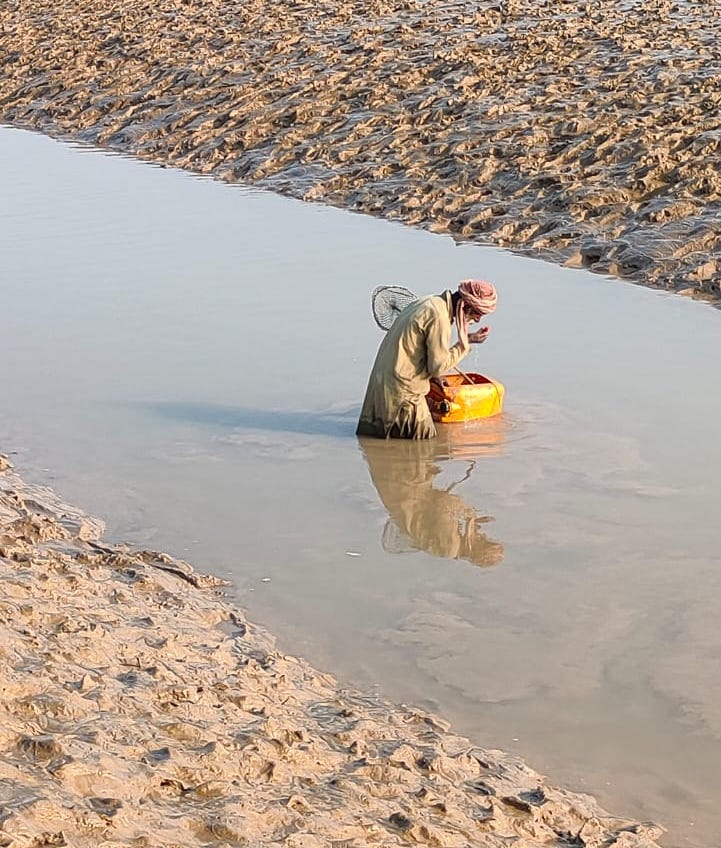
A middleman, who didn’t want to share his name to avoid legal repercussions, was asked if he thinks the rates are exploitative. “It’s business, those who invest like me would indeed make a profit. I invest, like in the floods, when people had no income,” he said.
“I invested in a grocery shop, and my fishermen took food items on loan, and I took a 20 percent commission from them on each crab. I help them when they are in trouble.” The commission this middleman took was additional to the cut mud catchers gave their own agents.
Anything above 300 grams gets 350 rupees, $1.55, a crab before the agents cut. But most of their catch is small. Crabs that are less than 115 grams are taken for free.
The middleman told VICE World News that he transports the mud crabs to a supplier in Karachi on commission, who sells them at another wholesale fish market where twenty big mud crab companies buy them. At the Ibrahim Hyderi wholesale market in Karachi, crabs that middlemen paid fishermen and their agents only $1.50 for, were sold for $7; and crabs that were bought for $0.67 were sold for $5.33. The biggest mark up was in the crabs bought for $0.04 or nothing, which were sold for $4.44.
Another supplier at the market, who didn’t want to share his name, acknowledged the inequality in the market. He said that 15 years ago he used to catch crabs too, but then started supplying directly to companies in Karachi. Now, he has four transport cars, 50 boats, a house, and has bought acres of agricultural land. He said his friends who he caught crabs with years ago can hardly buy a motorbike.
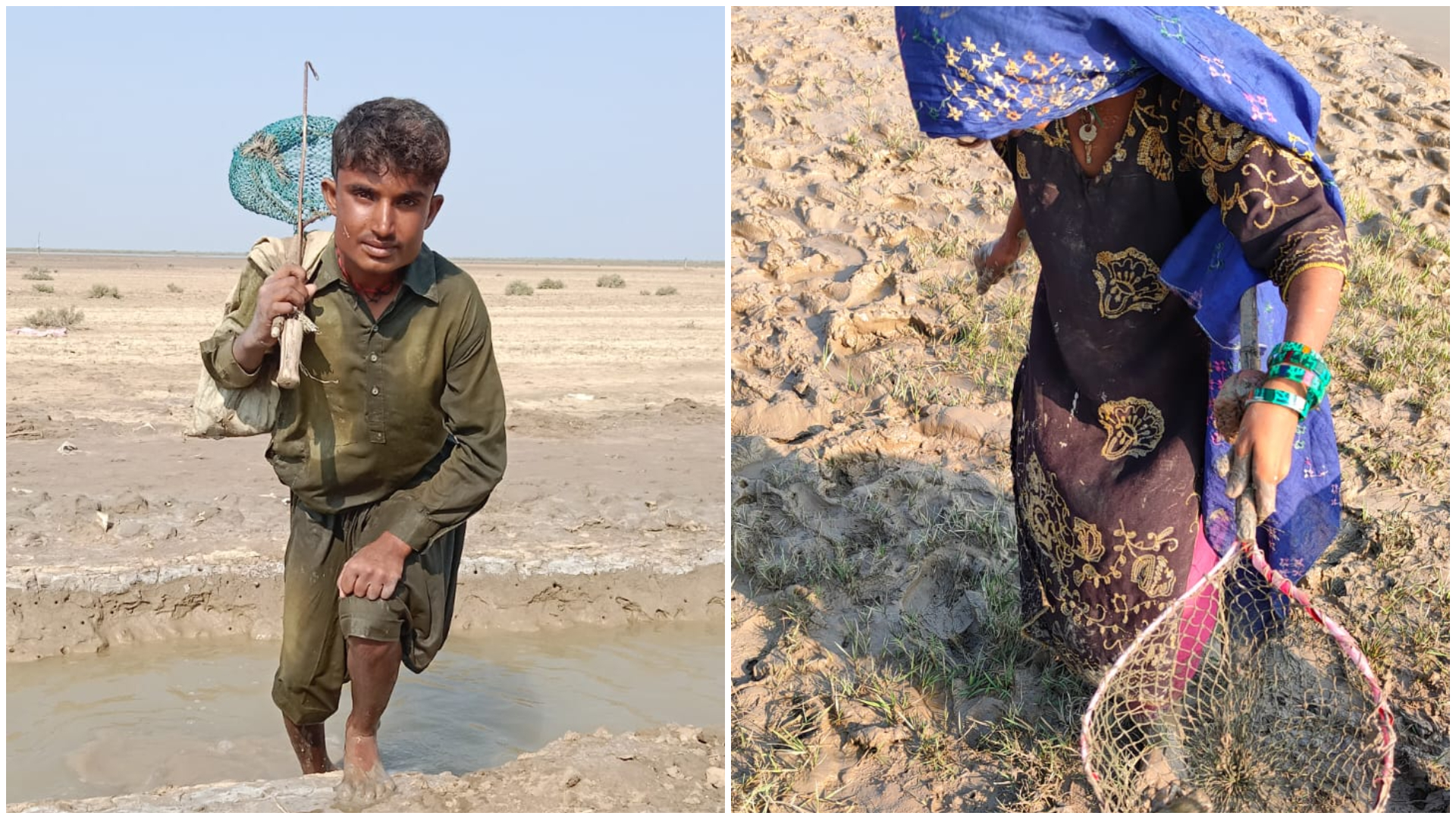
On condition of anonymity, a supplier told VICE World News that he buys and transports 2,000-5,000 mud crabs daily to mud crab exporting companies. VICE World reached out to several mud crab exporting companies but they did not share details about the prices they export at.
Transporting live mud crabs from the Indus Delta to companies in Karachi is not capital intensive. Mud crabs can survive several days in cool and moist conditions; fishermen and agents take them in plastic bags to the suppliers, where suppliers transport them in plastic boxes to companies, and there, they are washed, oxygenated and packed for export.
Moazzam Khan, a former director-general of Pakistan’s Marine Fisheries Department and a current advisor to the World Wildlife Fund-Pakistan, told VICE World News that 20,500 metric tons of fresh mud crabs were exported in 2016 alone.
“Fishermen are no doubt earning income which is why the mud crab industry is working,” he said. He didn’t think the supply chain mark-ups were exploitative. “The role of middlemen is quite important. Fishermen should save and manage their expenses so that they don’t need to borrow debt.”
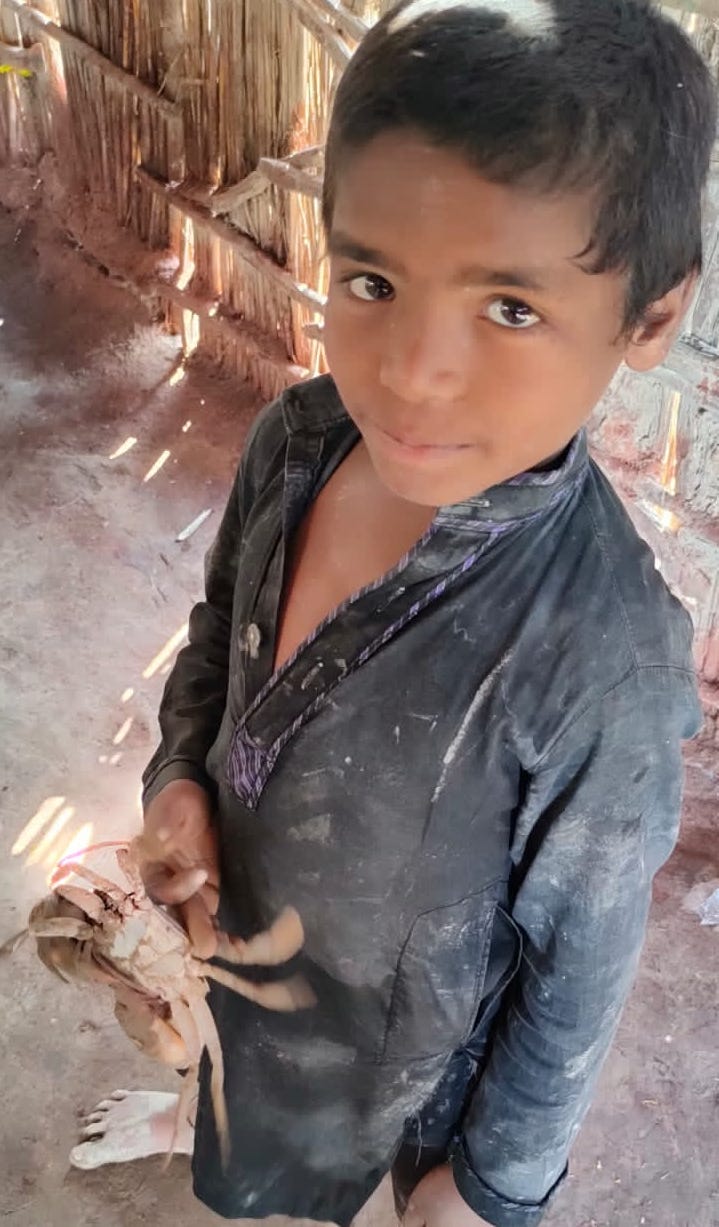
Majeed Motani, the Karachi lead of Pakistan’s Fisherfolk Forum disagrees and says Pakistan’s mud crab market needs regulation. “If the government intervenes, releases more water into the Indus-Delta, provides facilities to fishermen, gives them loans, and cuts the role of middlemen, discloses market rates, introduces checks-and-balances, fishermen may somehow become happy,” he said.
He also believes the unregulated market is a danger to mud crabs. Under Pakistani law it is illegal to export mud crabs that are less than 100 grams, but there are no rules against overfishing them or female populations, which are crucial for sustainability of the ecosystem.
“In other parts of the world there are certain rules and regulations, but here females and juvenile mud-crabs are caught and if it continues like this, we may not find them again.”
Zuhaib Ahmed Pirzada is a freelance journalist who writes on climate crisis, politics, fascism, patriarchy, and capitalism. He tweets at @zuhaib_pirzada.
